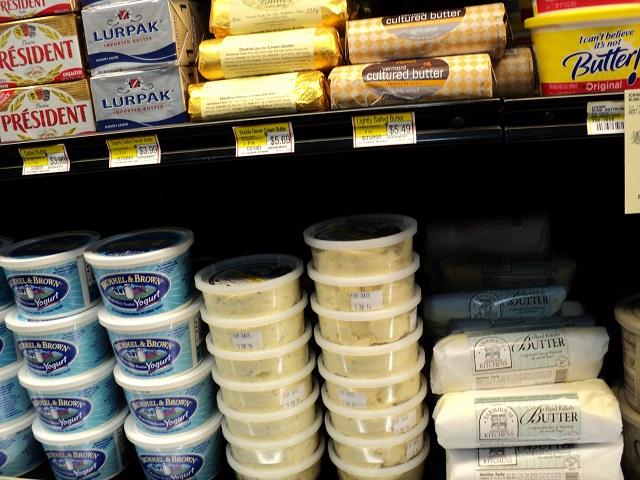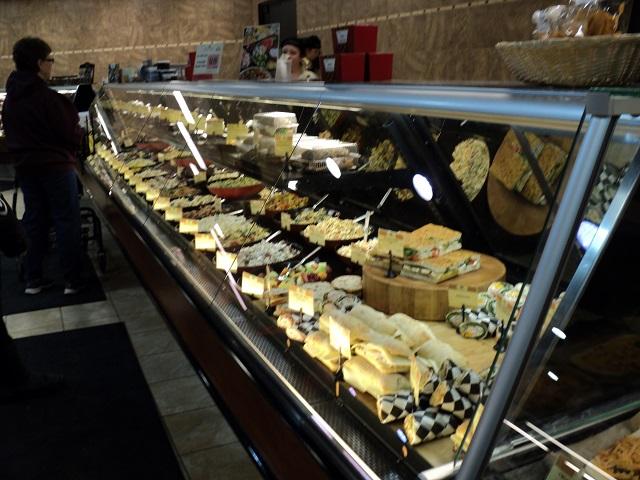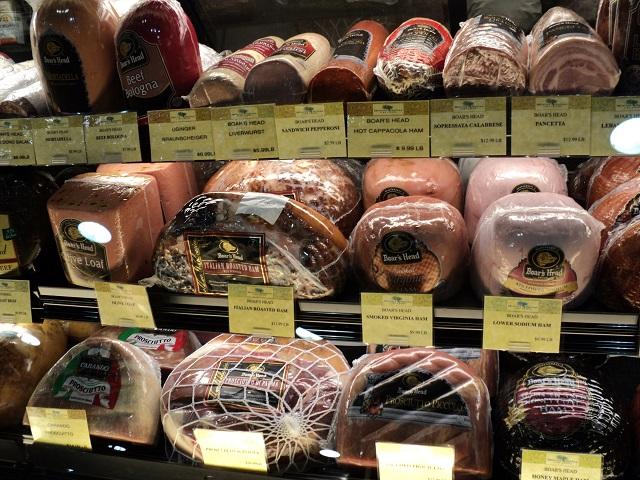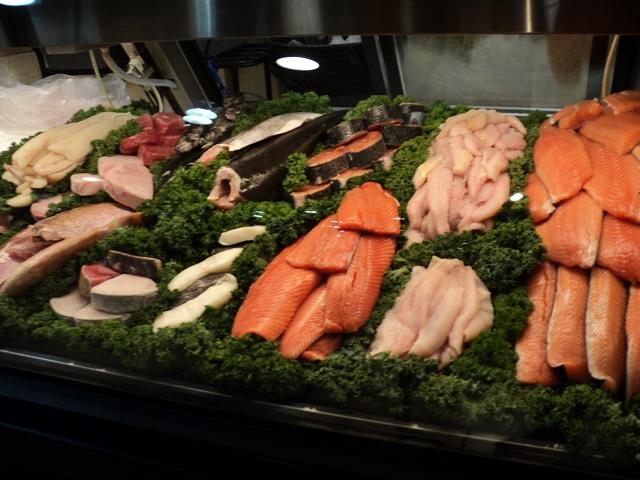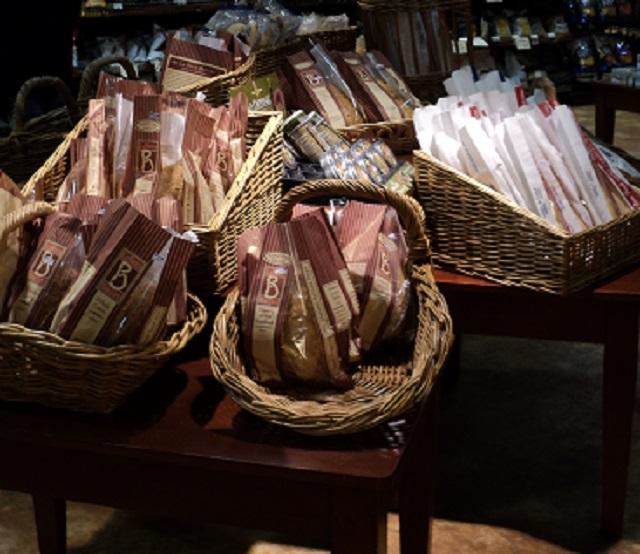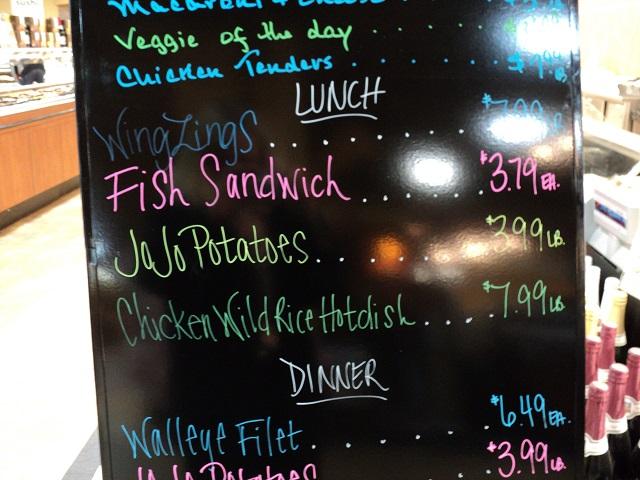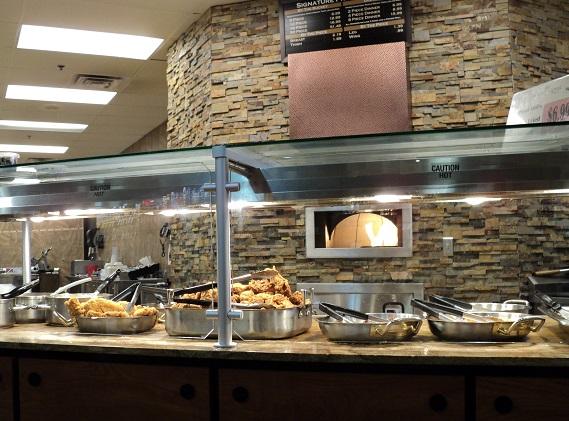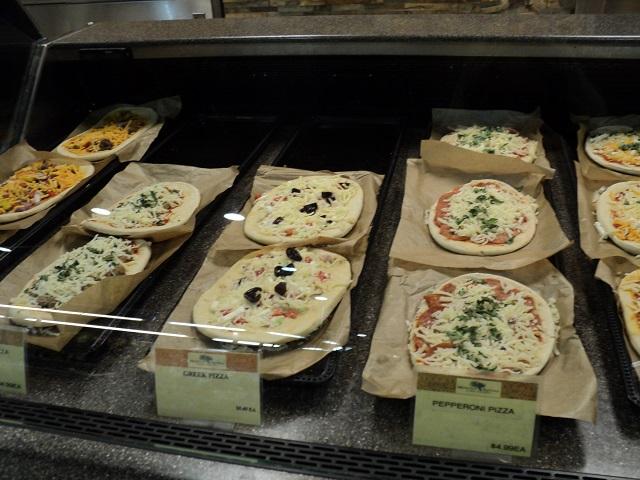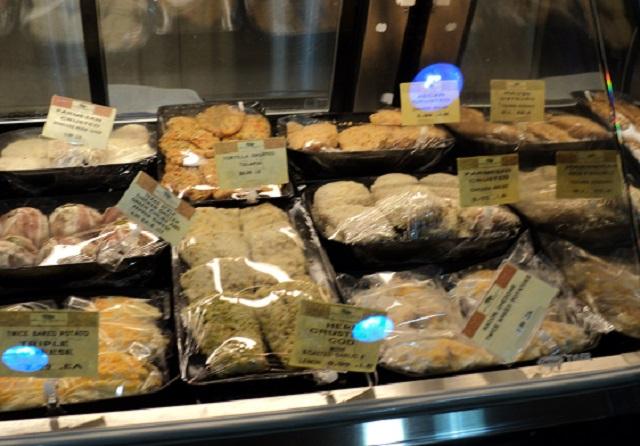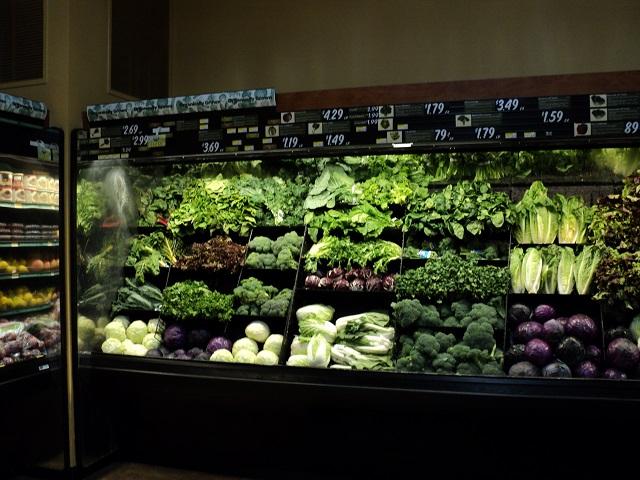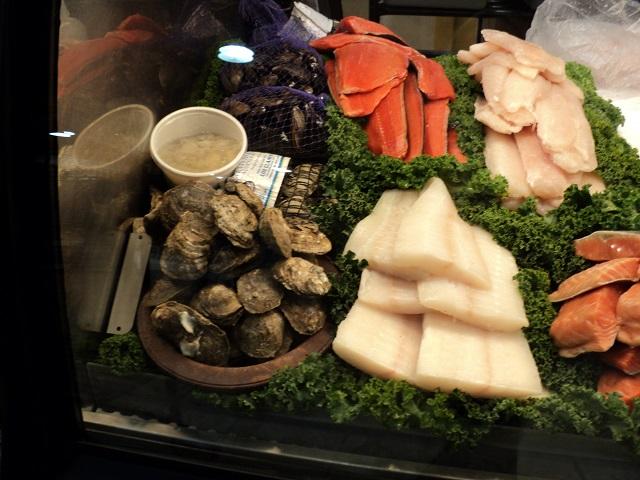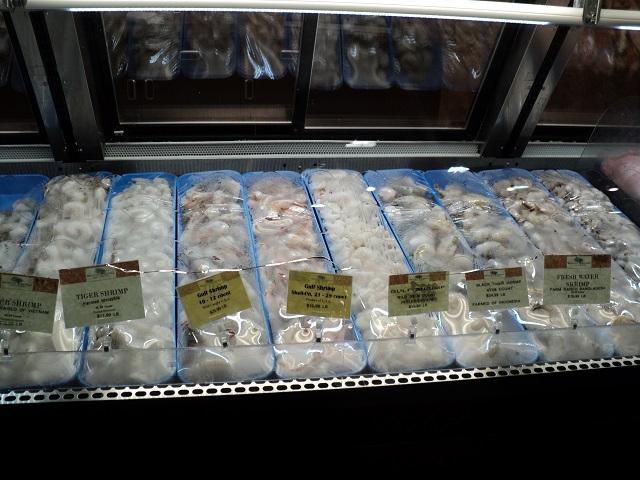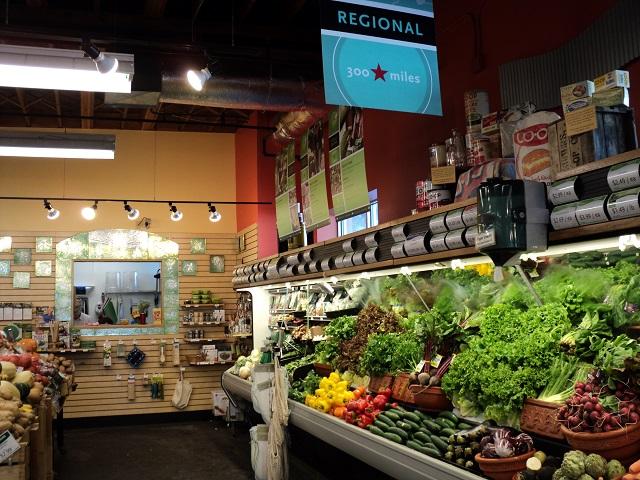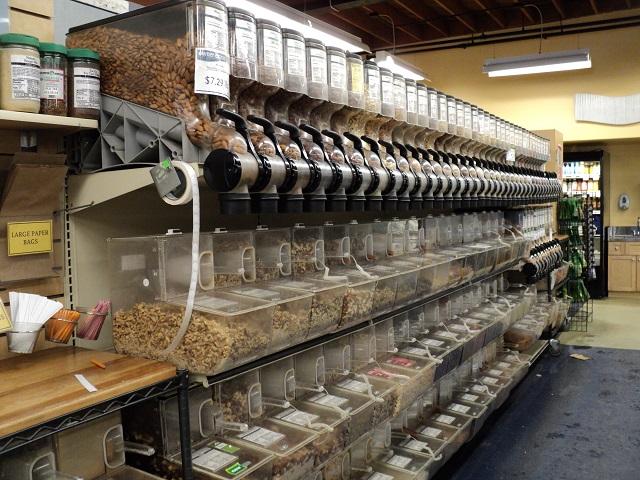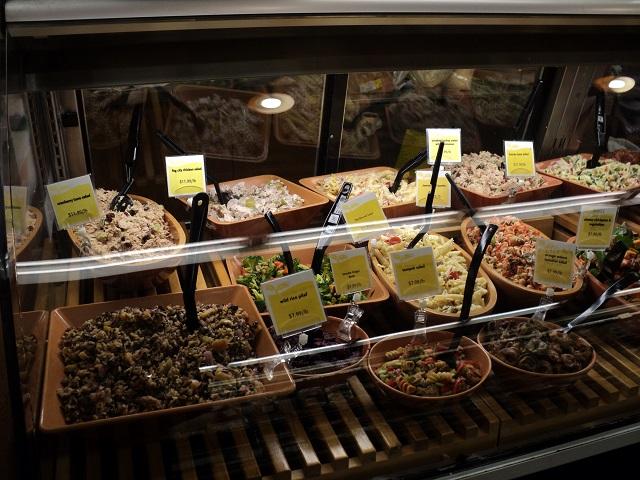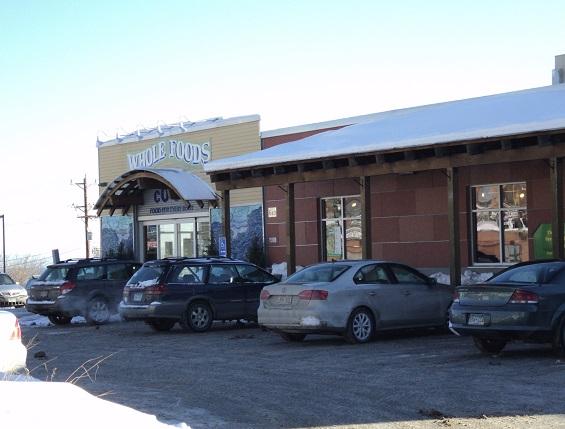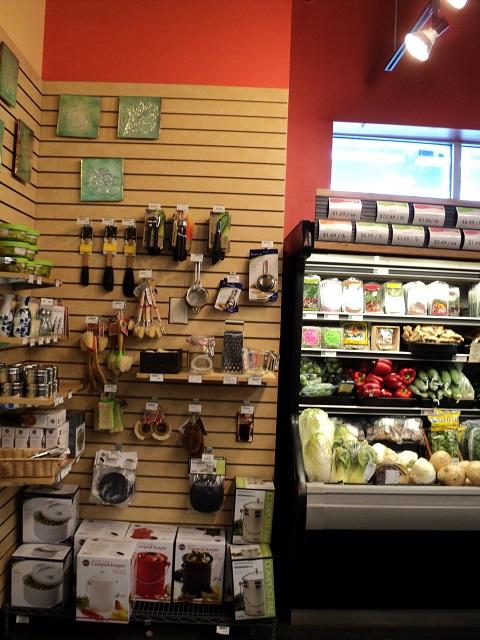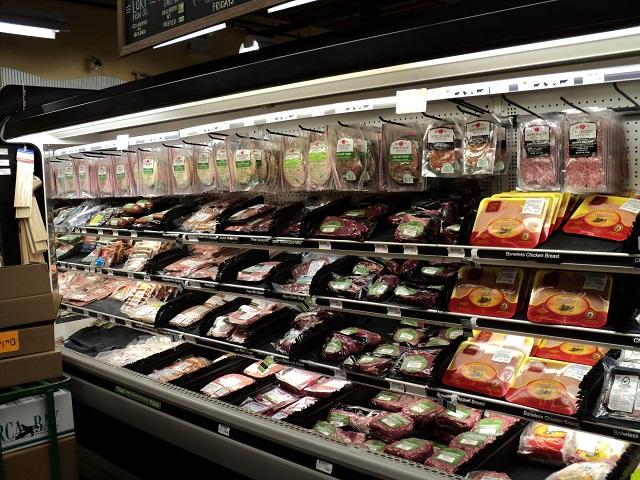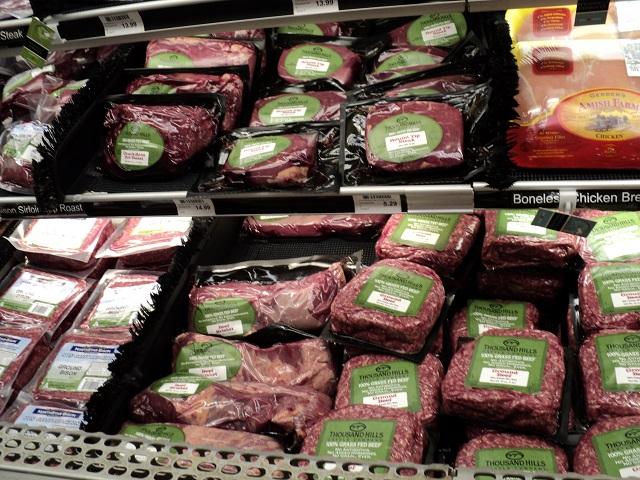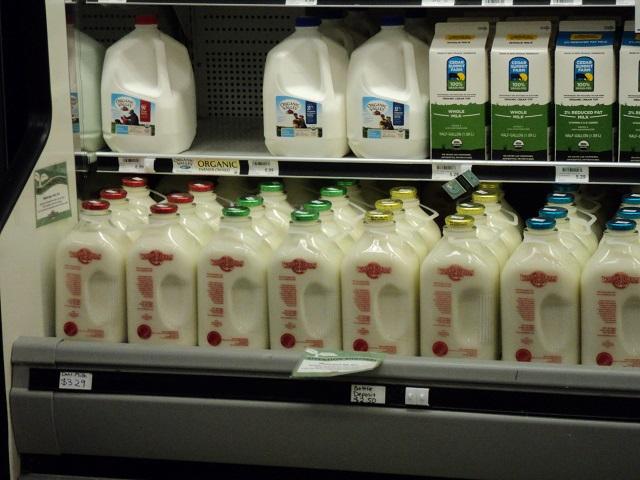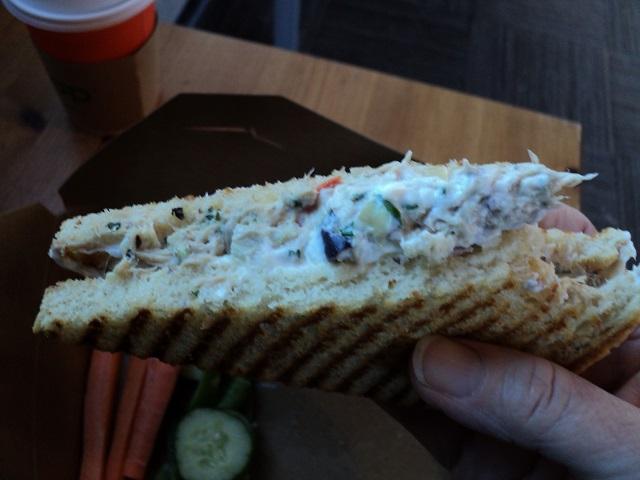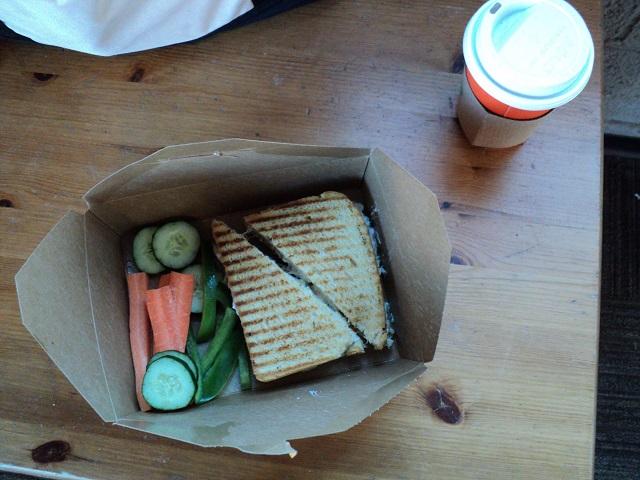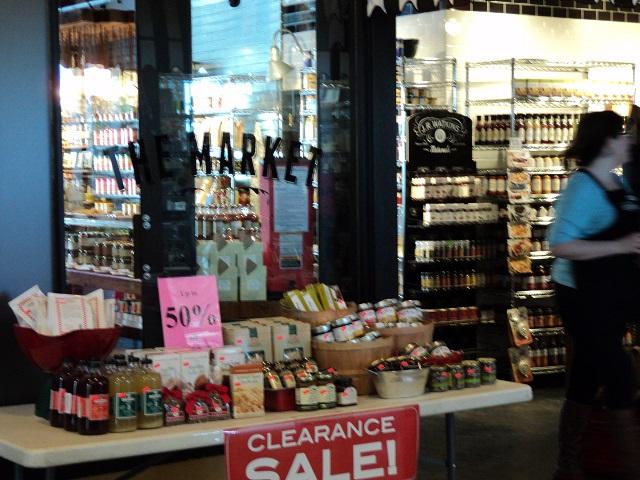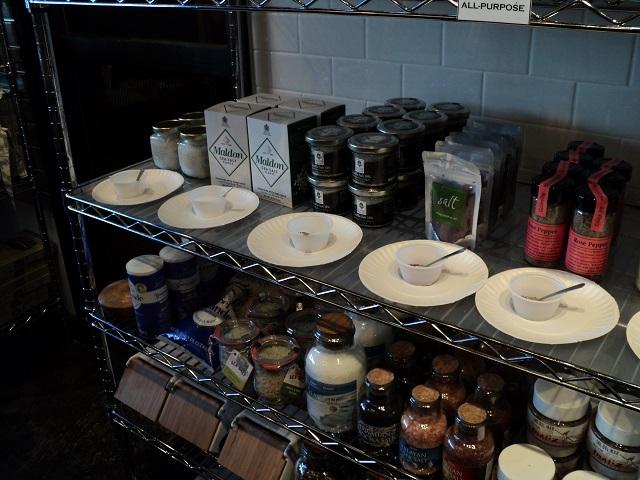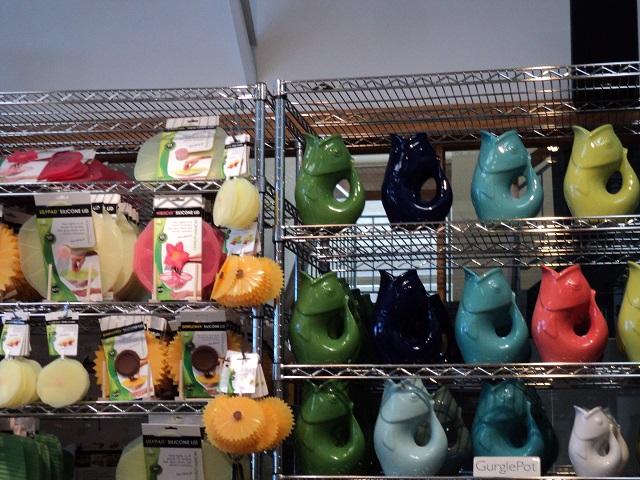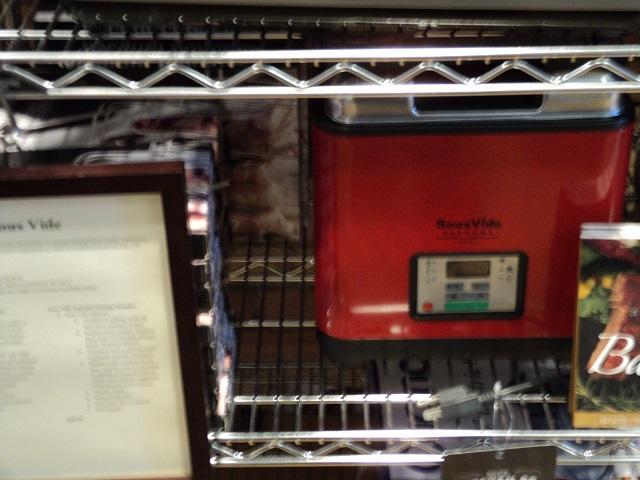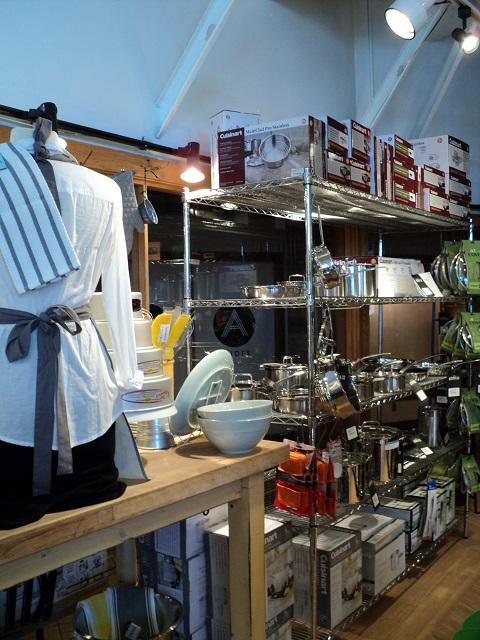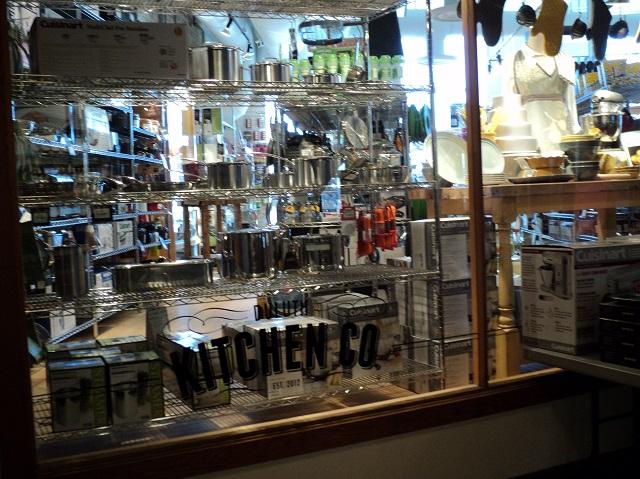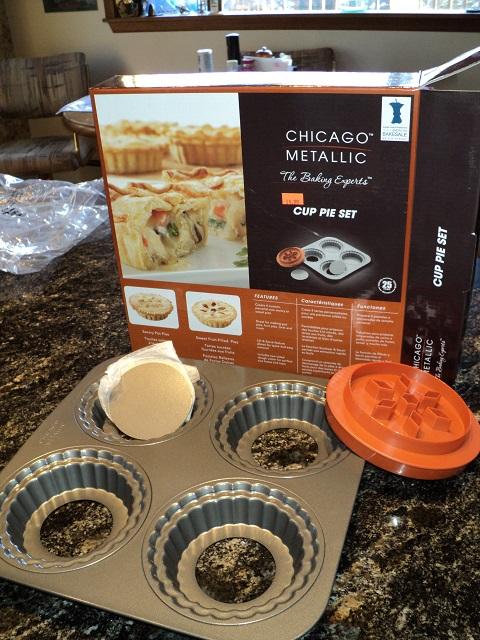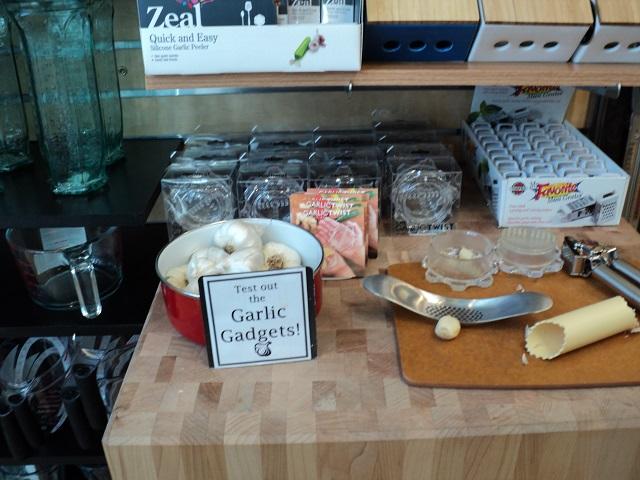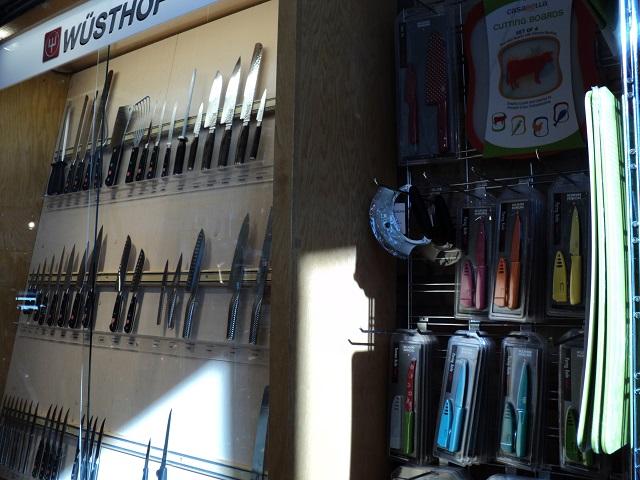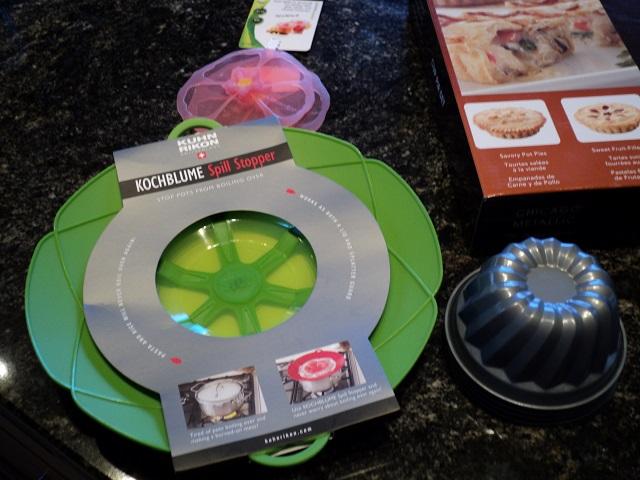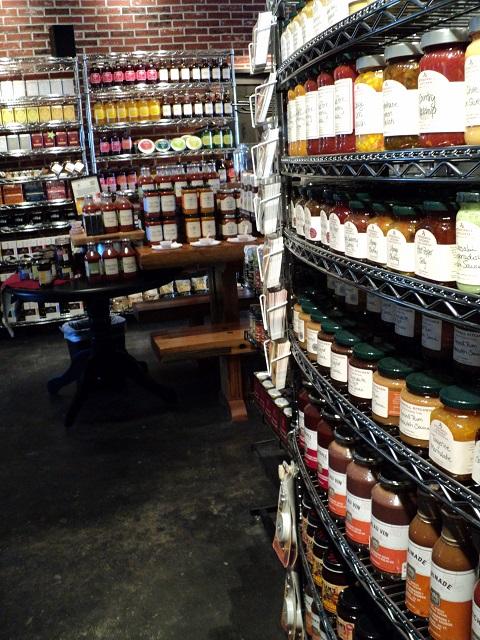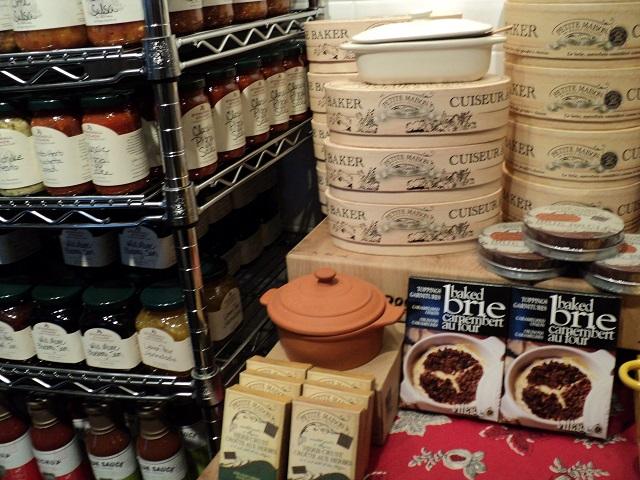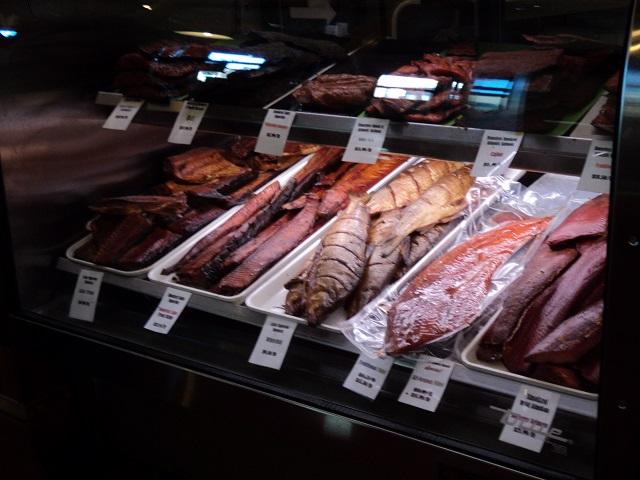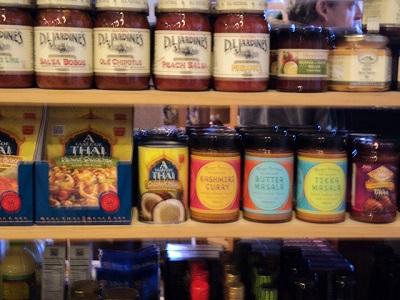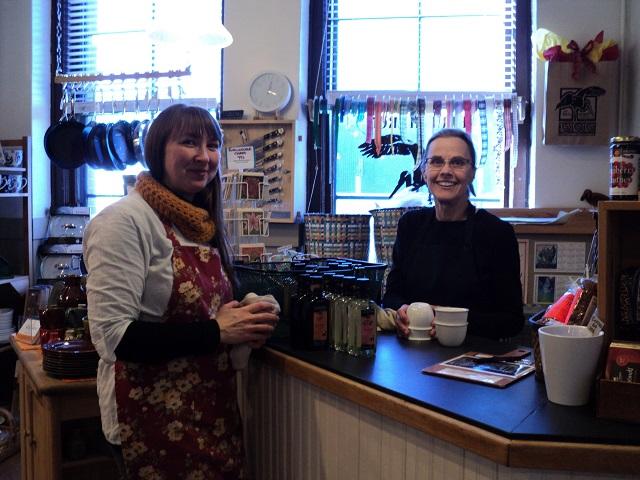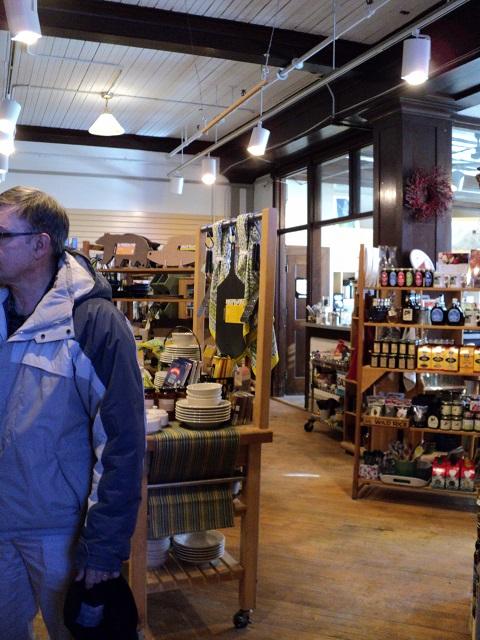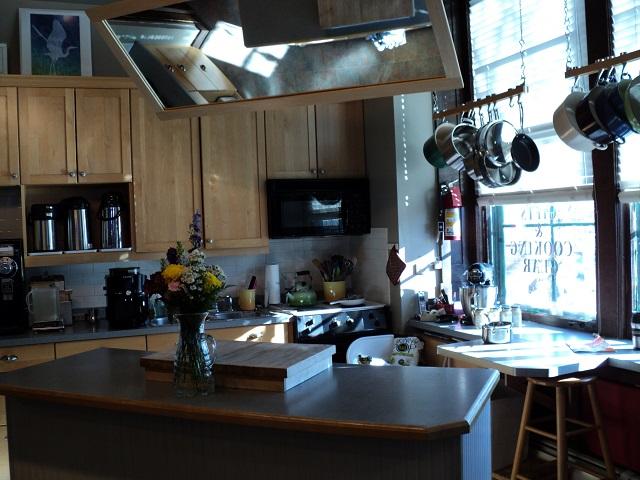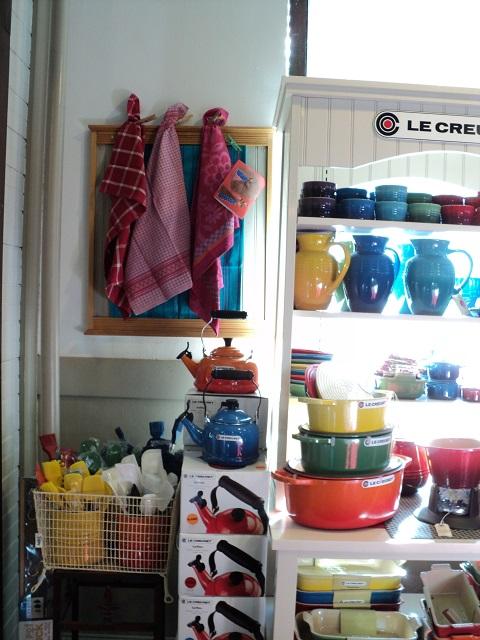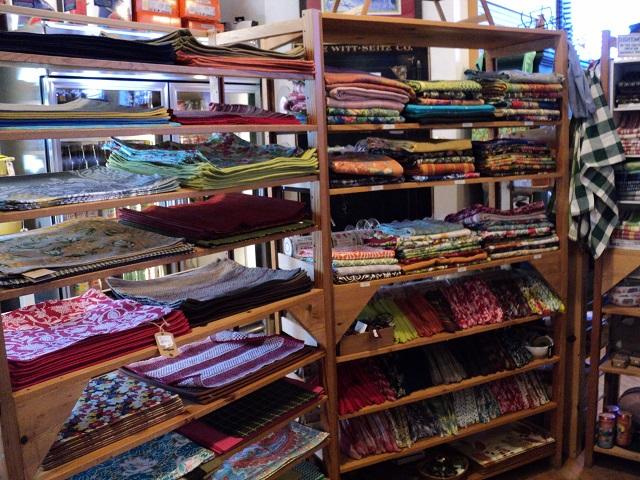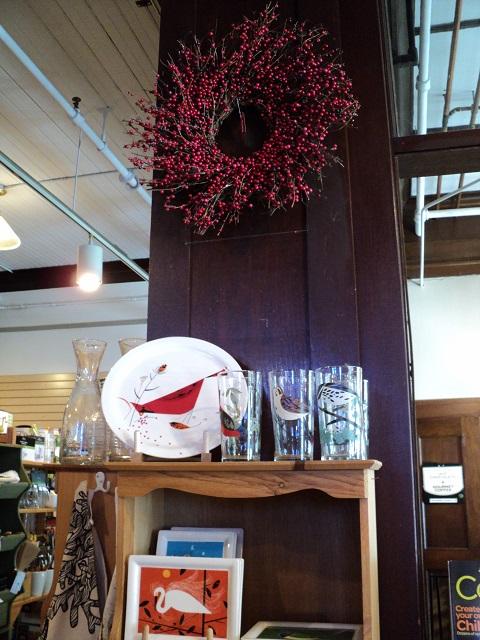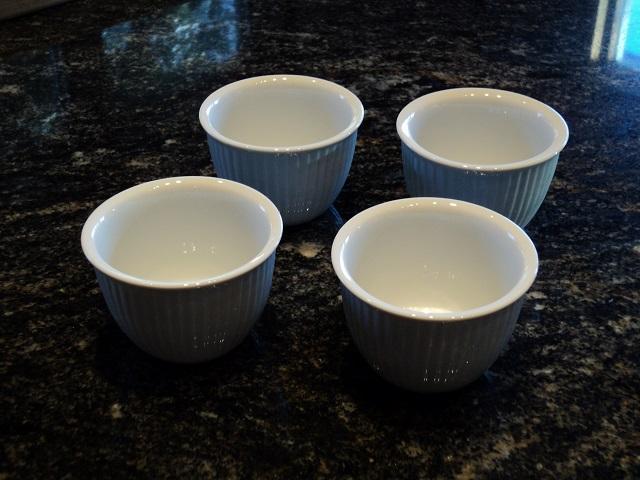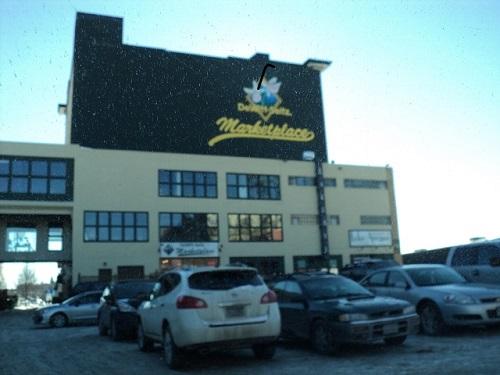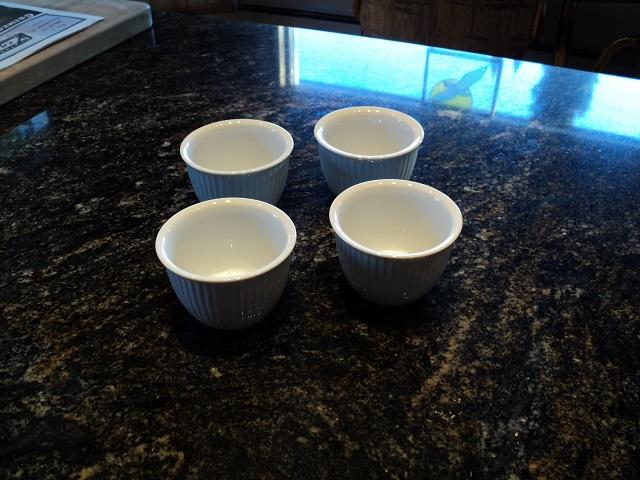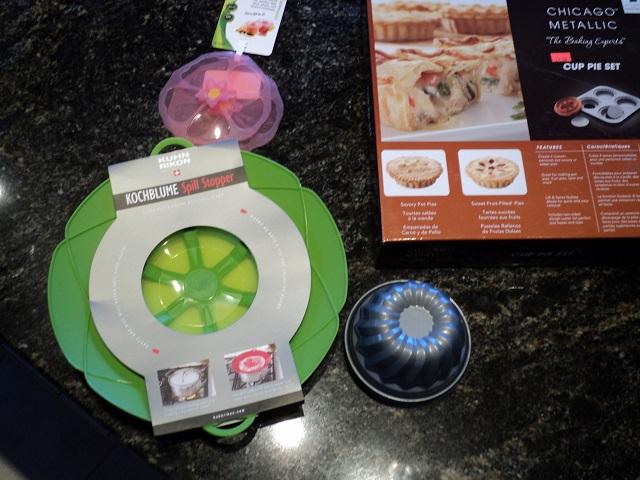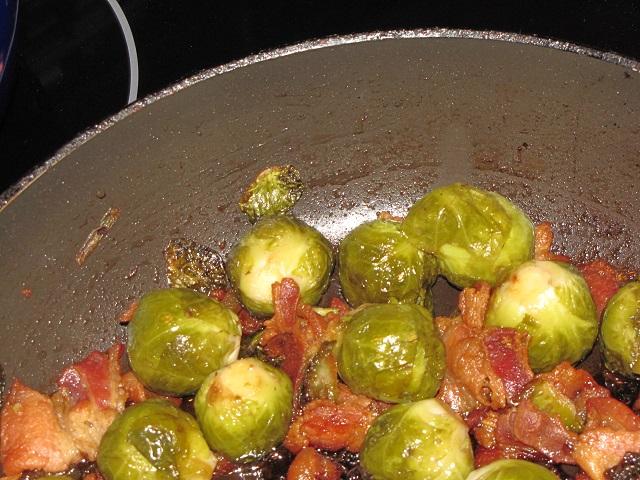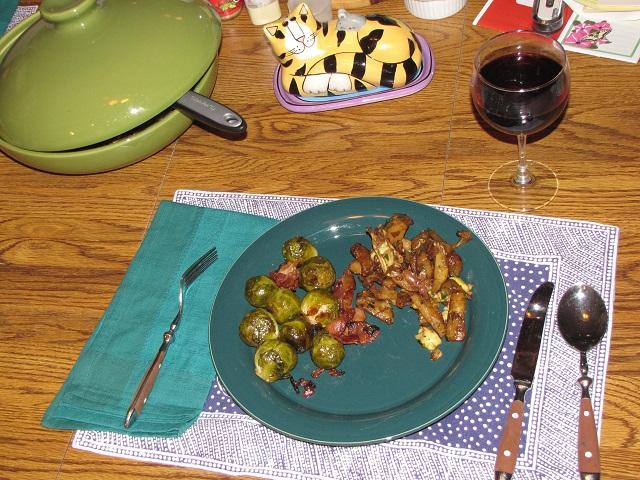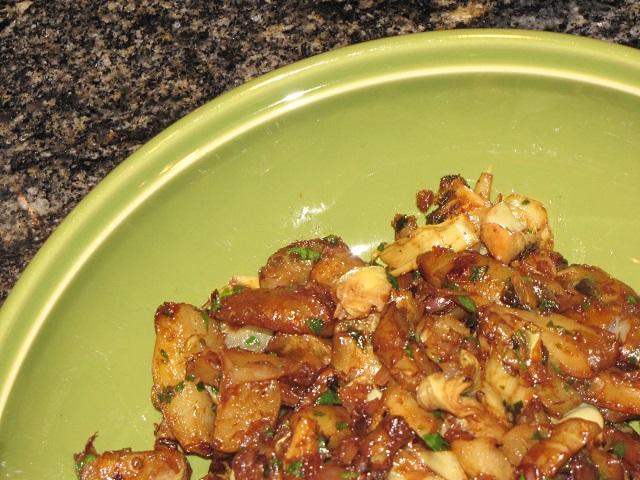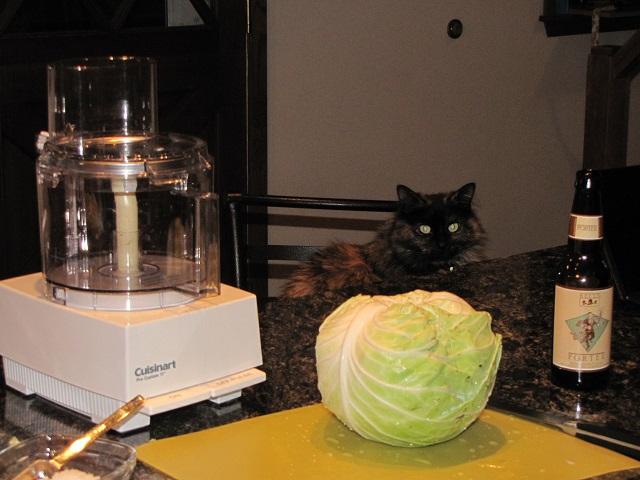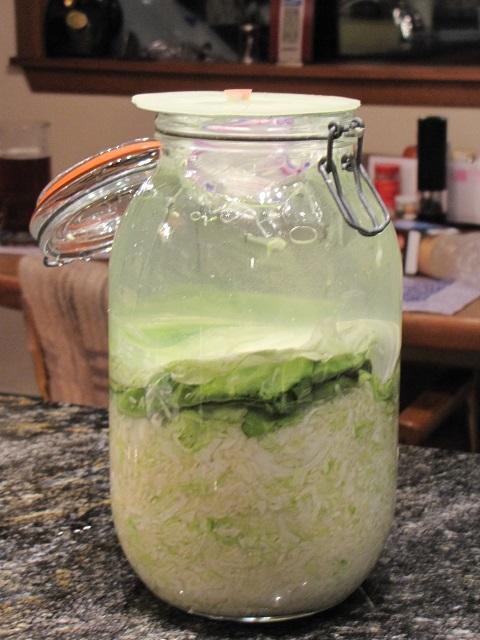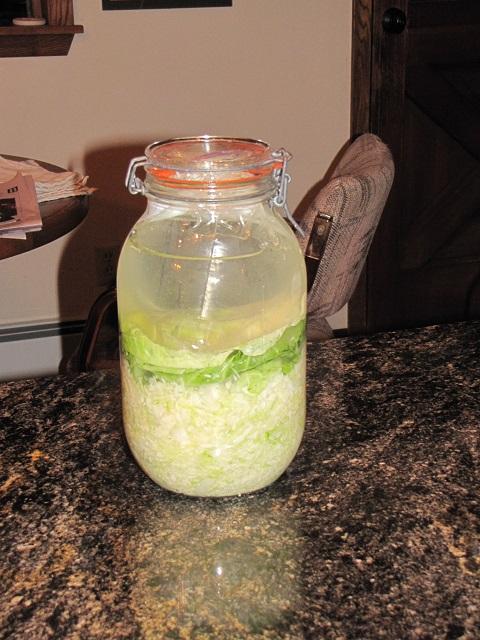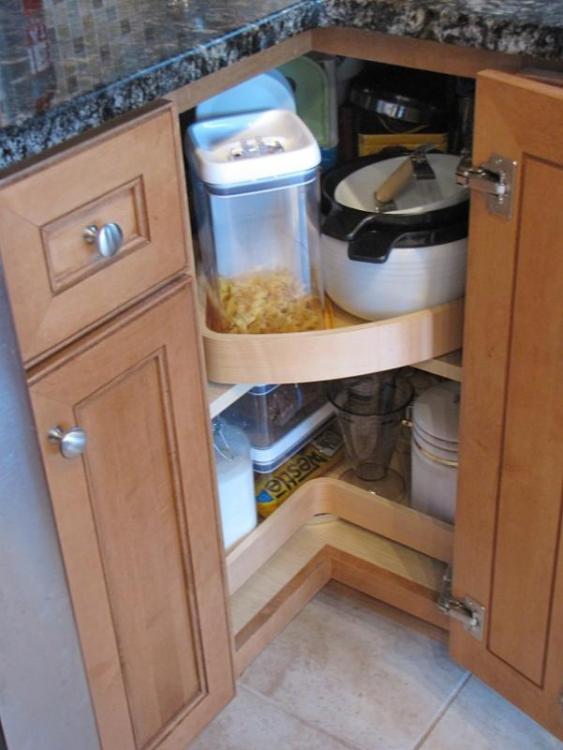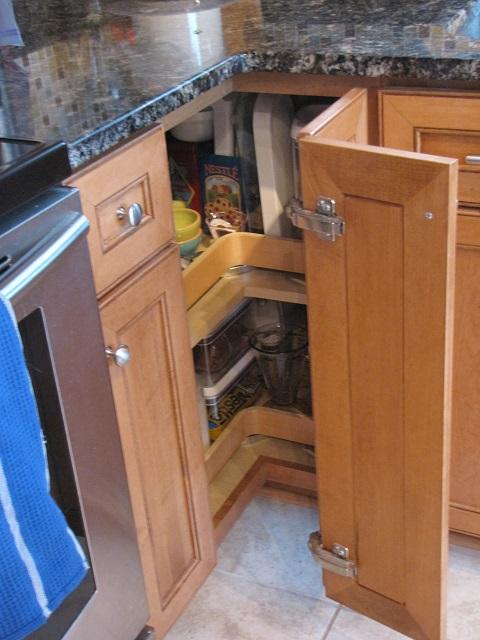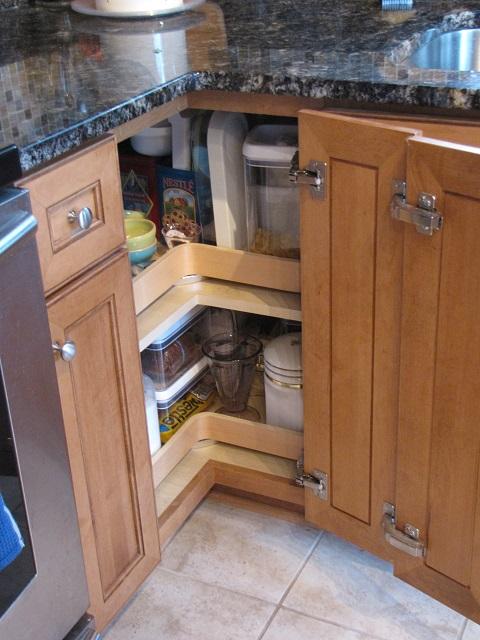-
Posts
13,747 -
Joined
-
Last visited
Content Type
Profiles
Forums
Store
Help Articles
Everything posted by Smithy
-

Foodblog: Smithy - Notes from the land of Cheap Refrigeration
Smithy replied to a topic in Food Traditions & Culture
I'm very glad you enjoyed it! Thanks for reading along!That's a good opening to note that I'll be wrapping this up sometime tomorrow, Sunday...probably right after my darling demonstrates his cooking style. Before I sign off, are there any other questions or comments? Have I left something unaddressed...other than the dog and the remaining cat :-) ? -

Foodblog: Smithy - Notes from the land of Cheap Refrigeration
Smithy replied to a topic in Food Traditions & Culture
The have a cafe that also sells some bread in the Anaheim Downtown Disney. Eaten there a few times. Food is reasonably good - not great - but I will eat there again. Their bread is sometimes to be found in our local Costcos.I'd love to be able to turn out bread like that. Got a way to go, though. -

Foodblog: Smithy - Notes from the land of Cheap Refrigeration
Smithy replied to a topic in Food Traditions & Culture
This one uses a double leaf, like a newly germinating seedling. -

Foodblog: Smithy - Notes from the land of Cheap Refrigeration
Smithy replied to a topic in Food Traditions & Culture
Maybe it hasn't been an issue because the full name is "The Whole Foods Coop". Cooperatives have been a big deal in northern Minnesota for a long time, and this particular cooperative easily predates the grocery chain. -

Foodblog: Smithy - Notes from the land of Cheap Refrigeration
Smithy replied to a topic in Food Traditions & Culture
What's the story, rotuts? I have her cookbook but don't remember any sort of story in there. -

Foodblog: Smithy - Notes from the land of Cheap Refrigeration
Smithy replied to a topic in Food Traditions & Culture
I made 2 more stops, and have photos of one of them. Mount Royal Fine Foods raised the bar for all the other grocery stores when it came into town. My darling prefers not to shop there when he can help it, because its selection of fine fresh foods is irresistable to me; I like to shop there for precisely the same reason. Their aisles are broad, their produce and meat are fresh, and their people are attentive and helpful. Last fall I accidentally left a package of fish behind. The next day when I couldn't find the fish, I called. They'd been waiting for me. The fish had accidentally been put into someone else's bag. That person had returned the fish (welcome to Duluth), and they'd set it aside for me in cold storage. They have some of the best fried chicken in town. In addition to the rotisserie they have a wood-fired oven in which they'll cook your personal pizzas or flatbread sandwiches while you wait. They have the most extensive delicatessen counters of any of the stores here in town. You can taste any of their meats or cheese before buying. None of the charcuterie is made in-house, but Boar's Head is usually a good brand. Their cheese selection is apparently what made Northern Waters Smokehaus decide to cut back on its cheese offerings. i didn't get a picture of the cheese counter, but it's huge. Produce: I'm more likely to find something unusual like Meyer lemons here than anywhere else in town. What really gets me is their fish and seafood area. It's all good, it's all fresh, and they always tell its source. If you want wild-caught, you can have it; if farmed Vietnamese shrimp doesn't bother you, you can get that too. Their meat counter is similarly good. I like giving my red-meat business to Old World Meats whenever possible, but Mt. Royal is also staffed with knowledgeable, helpful people. I found pig's feet there yesterday! They also offer convenience foods of prepared meats ready to be cooked. (Old World Meats also has such offerings.) They offer a variety of upscale dairy products and a bakery area with gorgeous cakes (sorry, no photos) and good bread. La Brea Bakery has offerings here. One of the many wonderful things about shopping here is that they watch the line length at the checkout counters. If the lines are getting long they'll call for another checker to come help. It's rare to be in line behind more than 2 people. Someone bags the groceries, and there's a drive-up area outside where someone will load your groceries into the car while you loaf in heated comfort. The guys who load the car are, happily, not worried about dogs. It can be startling to open a hatchback and be greeted by a 70-pound Siberian Husky. -

Foodblog: Smithy - Notes from the land of Cheap Refrigeration
Smithy replied to a topic in Food Traditions & Culture
We have a Whole Foods Coop, but it is not to be confused with the Whole Foods chain about which so much has been posted on eGullet. This little member-owned cooperative has expanded from one small shop to a very large one, and I see in their newsletter that they're considering opening another branch. You don't have to be a member/owner to shop there, but you get price breaks if you do. They focus on local produce whenever possible, but they're no more purists about it than I. What they do focus on is high quality. They have a very few kitchen gadgets and this is the place where you'd buy, say, a composting bucket. I get most of my spices and bulk grains here. It's an especially good price for those, because you can bring your own container and take just as much or as little as you need. Prices are by the pound. Their meat selection has expanded to include a good variety of grass-fed beef, bison, free-range chicken, sausages, and otherwise good fresh animal products. You can actually get milk or cream in glass bottles with a deposit There's a hot-meal bar, and a nice selection of cheeses. They can't find my Egyptian feta cheese either, more's the pity. Their deli counter offers a nice selection of salads, and you can get a sandwich made or buy one pre-made. In addition to the sunchokes, half-and-half, and some other odds and ends (didn't need spices), I bought lunch here: tuna melt made of Tuscan tuna salad on sourdough bread, with garlic-herb cheese. Wonderful! Fresh veggies and coffee rounded off the meal, and allowed me to make my way on through the cold. -

Foodblog: Smithy - Notes from the land of Cheap Refrigeration
Smithy replied to a topic in Food Traditions & Culture
Another wonderful shopping complex in downtown Duluth is the Fitger's building. Fitger's was originally a brewery and the old brick building has been converted to house shops, restaurants, a theater, a hotel, meeting rooms, and even a spa. Last year I was amazed to find that a new kitchen company had sprouted late in 2012, conveniently close to the parking ramp. The Duluth Kitchen Company is astonishing for our area. Think Sur la Table, or Williams-Sonoma, for size and complexity. They also have a wonderful selection of cookware, bakeware, glassware (get your Reidel here) and cutlery. They have a lot more appliances than the Blue Heron, and I was only mildly surprised to see that they're expanding into the sous vide technology. Sorry the photos are blurry. They have user-friendly displays that allow some gear to be tested. Across the hall is their shop with the jarred sauces, oils, salts, vinegars, and other edibles. Almost anything can be tasted there. Woe is me, I just went in to get another small set of Charles Viancin lids (some day I'm going to break down and get one of those glugg fish pitchers) but discovered a sale table. It's the winter clearance going on. I came home with these: I've worried a bit that this store might cut into the Blue Heron's business. So far, both stores say no; they try not to overlap on what they carry, and they seem to communicate well. The Duluth Kitchen Company is much larger and can carry more stock, but they do have a different feel. I think Blue Heron carries more locally-made goods (Epicurean cutting boards and certain of the jams and jellies), and I like their selection of textiles better. But oh, those Cuisinart skillets at Duluth Kitchen! -

Foodblog: Smithy - Notes from the land of Cheap Refrigeration
Smithy replied to a topic in Food Traditions & Culture
Right around the corner, still in the Dewitt Seitz Building, sits another great local source of charcuterie and smoked fish: Northern Waters Smokehaus. When they first started they had a huge cheese counter in addition to the smoked fish and cured meats, but eventually decided to cut back on the cheese (it's there, but not as abundant) and start offering sandwiches. I like their smoked salmon best of any in Duluth - it's more moist and tender than any of the other locally smoked fish. Better still, they ship!1 I had intended to pick up some sort of cured meat to include with the rest of my squash pasta stuffing. However, the line was slow and then suddenly the place became so crowded I couldn't even get in the door. They usually do a good business, but I think some crowd had all come in together. I decided to go elsewhere. 1 Northern Waters Smokehaus, Blue Heron Trading Company, and the Duluth Kitchen Company (still to come) all have web sites for more information. Northern Waters is the only one that ships, as far as I know. -

Foodblog: Smithy - Notes from the land of Cheap Refrigeration
Smithy replied to a topic in Food Traditions & Culture
Near the base of the Lift Bridge, peeking over the building in the middle ground (follow the line of the pier toward the bridge), sits the DeWitt-Seitz Marketplace, home of my favorite shop in all Duluth: The Blue Heron Trading Company. They've been in business for 28 years, and for at least a decade were the only kitchen shop in Duluth. They offer cooking classes, taught by local chefs and covering a broad range of topics from pastries to savory soups to various cuisines. The classes fill quickly, usually within a day or two of the new schedule announcement being sent out. There are beautiful textiles and fun decorations and dishes and Le Creuset and Viking cookware and kitchen gadgets and bakeware and glassware galore and a lot of jarred sauces, coffees, spices. This is where I pick up a lot of my jarred sauces, although as noted uptopic I also take advantage of Cub Foods' offerings. The left-hand photo didn't come out well, but one of my favorite brands of Indian simmering sauce is Maya Kaimal. The stock turns over quickly enough that there's almost always something new to see. This shop was such an outlier from the working-class Duluth waterfront area when it first opened, that I was surprised it survived. However, it's flourished and still goes strong in its small little shop. I visited with my friends there and then bought four custard cups. We joked that it's the least expensive visit I've made there in years. -

Foodblog: Smithy - Notes from the land of Cheap Refrigeration
Smithy replied to a topic in Food Traditions & Culture
I haven't actually tried them because of their reputation and a friend of mine suffered their wrath! Huh. I think I'm glad I read this after we ate some, instead of before. Does it matter whether they're cooked or raw? -

Foodblog: Smithy - Notes from the land of Cheap Refrigeration
Smithy replied to a topic in Food Traditions & Culture
Thank you for all those ideas for the Jerusalem artichokes! I bought 2 bag's worth yesterday, so now I'll have fun figuring out more options to try. Our process for deciding what to eat goes something like this: (a) "What's for dinner tonight?" ..."I have a hankering to try this new recipe" or (b) "What's for dinner tonight?" ..."We need to something with that chicken. What shall we do?" or © "What's for dinner tonight?" ..."I dunno, what sounds good to you?" or (d) "What's for dinner tonight?" ..."Gotta be something easy. We'll be busy all day." pretty random, in other words. He generally prepares 1 or 2 dinners a week, counting leftovers. He is the king of easy but tasty cookery, relying heavily on the crockpot and microwave. If it takes more than 2 pots or 2 steps he isn't going to make it. Tomorrow night will be crockpot pork roast and potatoes with sauerkraut. (We had leftovers from the last such batch one evening this week.) The roast is already out thawing. Tomorrow he'll chop the potatoes and microwave them to get them started, throw the meat and potatoes into the crockpot, and add the sauerkraut about an hour before we want to eat. He'll probably microwave some brussels sprouts or peas to round things out. Cleanup generally falls to the cook. I am a bit envious of those married couples who have an alternating arrangement in which one person cooks and the other cleans, but my darling made it clear early in our marriage that our cooking styles are too imbalanced for that to work: while he loves my cooking, he doesn't think any meal is worth a bunch of putzing around and then having a lot of cleanup. When I'm away he often does everything in a single dish that he microwaves, then eats from, then washes and stows. The dishwasher can go for over a week without being run. -

Foodblog: Smithy - Notes from the land of Cheap Refrigeration
Smithy replied to a topic in Food Traditions & Culture
Teaser from the Friday shopping expedition: Has anyone else played with those Kochblume spill stoppers? They're wizard! -

Foodblog: Smithy - Notes from the land of Cheap Refrigeration
Smithy replied to a topic in Food Traditions & Culture
Tonight's dinner: Jerusalem artichokes via the following recipe from Fine Cooking: http://www.finecooking.com/recipes/pan-roasted-sunchokes-artichoke-hearts-lemon-herb-butter.aspx and brussels sprouts pan-cooked with bacon. The sunchokes are interesting: a bit lemony, a bit like artichokes, a bit like jicama, but they look like potatoes. This is more or less what the magazine said, and we both agreed. Tasty! We'll be eating them again in the future. Er, not the most attractive food stylings in the world. Fortunately, our tongues are colorblind. -

Foodblog: Smithy - Notes from the land of Cheap Refrigeration
Smithy replied to a topic in Food Traditions & Culture
Meredith, mine is an 11-cup. I was intimidated by my mother's Cuisinart, many years ago, I forget the size. As I recall, the biggest issue was figuring out which pieces could be disconnected in the feeder tube, and which were supposed to stay together. What I love about my Cuisinart is its quiet power and weight: it sits solidly and hums quietly on the counter as it chops or blends or grinds or shreds; the Regal I bought many many years ago shook the house and scared the livestock for the simplest tasks. What I don't like about it is cleaning it, and taking things apart that weren't designed to be taken apart so I can shove large pieces of food down its throat, and/or clean it properly. I think the issues are the same as with my mother's, but I'm more assertive with kitchen machinery than I used to be. I'll be happy to work with you, long distance as it were, to make friends with your Cuisinart! Please feel free to post questions to this blog, although it's winding down, or you can PM me, or start a topic about it to get the expertise of many eGulleteers. The advantage of the PM route is that it's private; the advantage of starting your own topic is that you may find someone with the same model you have, and/or someone who's come up with solutions new to both of us. -
Refrigerated seems common enough...but pasteurized? Really? In my neck of the woods the pasteurized eggs are clearly labeled and commensurately expensive. Am I misunderstanding your meaning?
-

Foodblog: Smithy - Notes from the land of Cheap Refrigeration
Smithy replied to a topic in Food Traditions & Culture
I picked up some sunchokes. a.k.a. Jerusalem artichokes. I have a recipe in mind to try out of Fine Cooking, but what favorite treatments can somebody here teach me? -

Foodblog: Smithy - Notes from the land of Cheap Refrigeration
Smithy replied to a topic in Food Traditions & Culture
Shelby, it's very easy...at least, it's easy to set up and seems almost foolproof. As noted above, I may be overconfident. ;-) I've been away most of the day and occupied during the rest of it. Shopping report and photos to follow, sometime this evening. Edited for spelling: "foolpoof" is just too accidentally ironic to let stand. Although it was a funny accident. :-) -
...and which was the winner? (aside from the flirtatious server )
-

Foodblog: Smithy - Notes from the land of Cheap Refrigeration
Smithy replied to a topic in Food Traditions & Culture
Not much cookery today. As foreshadowed by an earlier post ("foreshadowed": don't that sound literary?) we were fairly well occupied with new snow-removal equipment. Furthermore, we had more than a gracious plenty of leftovers. (I haven't even gotten into the Christmas cookies! Perhaps after I finish this post. ) I have a new Christmas gift to show off, but didn't get around to playing with it tonight. What I did do was take about 3 pounds of cabbage and threaten to turn it into sauerkraut. It had better listen. I don't want to have to tell it again. The head of cabbage was beautiful, but my photo of it basking in the glory of the colander didn't come out well enough for publication. Trust me: it had large, luxuriant leaves on the outside that are now playing a major role in sealing the sauerkraut jar. After rinsing a bit and coring, it was time to trot out the food processer, salt, and well-cleaned 1-gallon jar. This time, Sekhmet the spook supervised. She was really hoping I'd put down the camera and the knives and come cuddle her. I did that later. This kraut batch may be a bit too salty. I keep reading that the best proportion is approximately 3 T salt for every 5 lbs cabbage. I think I have about 4 T salt for 3 lbs cabbage. On the other hand, I added water to make sure the cabbage was well submerged. I'll just have to see how it works out. The first attempt last fall had such an excellent result that I'm now in danger of saying, "oh, that's easy!" when it was really just Beginner's Luck. I sealed the lid in the first picture because, after filling and stuffing the jar and making sure all available air space was taken up with water-filled Ziplock bags, I washed the outside. Most of the time the jar will sit with one of those Charles Viancin lily pads atop the mouth; gases will be able to get out, but nothing will be able to get in. I really need to go buy more of those little portable flapper valves. -

Foodblog: Smithy - Notes from the land of Cheap Refrigeration
Smithy replied to a topic in Food Traditions & Culture
Thank you, Dejah! I hope you enjoy those recipes as much as I have. -

Foodblog: Smithy - Notes from the land of Cheap Refrigeration
Smithy replied to a topic in Food Traditions & Culture
ElsieD, you're very welcome! Good luck with that move - and with finding a new companion to share your lives...if not Zorro, then another. Or three or four! It occurs to me that I need to have started my next batch of sauerkraut several days ago. I'll try to get to that today, and post photos. With regard to corner cupboards, I was surprised to find that even they have design choices. There are semicircular pull-out shelves that pivot halfway out through the door opening and then slide out the rest of the way. Their advantage is that they have a standard-width door instead of the relatively small opening of my (and Annabelle's ) cupboards. I found myself having to trade off door space for wider cupboards elsewhere along the line, and I'm happy with this choice. The friends who came over last night went the other way in their larger kitchen, and they're happy with their choice. I'm grateful that so many options exist. -

Foodblog: Smithy - Notes from the land of Cheap Refrigeration
Smithy replied to a topic in Food Traditions & Culture
I don't know whether to describe it as good planning (crafty) or bad (calories) but so far today I've noshed on leftover bread, cheese, and tri-tip. That tri-tip was as tender and flavorful as I can remember having in a very long time. I think I'm onto something. Since it's snowing again, and we have new snow removal equipment coming today (a fancier roof rake) I figure I'll burn those calories. That's my story, and I'm sticking to it. (Yes, the pipes are okay, thank heaven! and no, no cleats except to protect the vents.) I'm not sure what I'll be cooking today. Depends on how the snow removal project goes. Tomorrow, for sure, another trip to town so I can show off more favorite shops. -

Foodblog: Smithy - Notes from the land of Cheap Refrigeration
Smithy replied to a topic in Food Traditions & Culture
If it's not too much trouble, I would like to see a picture of this. We are moving into a condo next week that has three of these corner cupboards and i'm trying to find out what would make the contents more accessible. PS I also like the pictures of your kitties. No trouble at all! The door is jointed so it makes that right-angle corner, but then can open straight to clear the way. You can see that the turntables have a quarter-circle "notch" taken out to accommodate the corner; that allows the turntable to use more of the available space. The turntables move independently. Marco Polo thinks they're really cool. As you see, the storage is pretty good in there. I have a couple of tall canisters of pasta tucked away in the corner, off the turntable, but there isn't much wasted space. -

Foodblog: Smithy - Notes from the land of Cheap Refrigeration
Smithy replied to a topic in Food Traditions & Culture
Thank you. Yes, our kitchen designer convinced me that the extra granite for the splash guard would be money well spent. She was right...but I was surprised at the additional cost. Then again, a lot of things added up - a little here, a little there. Kitchen remodeling is not cheap. I'm really glad we did it for ourselves, while we could enjoy it, instead of waiting until time to sell the house and then spending money to fix it up.



